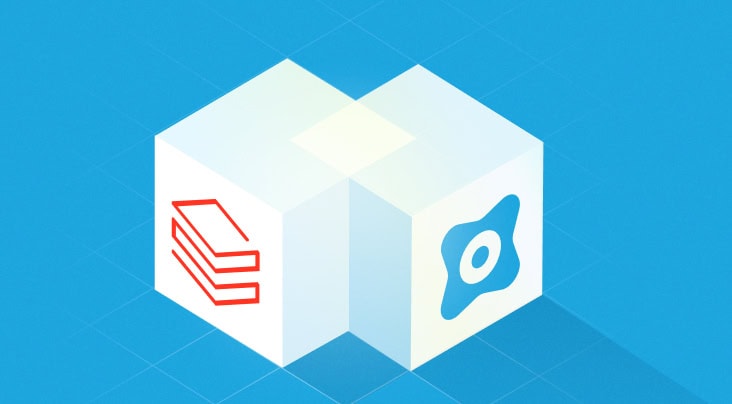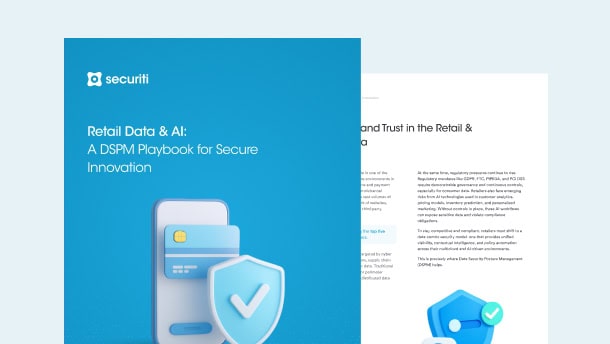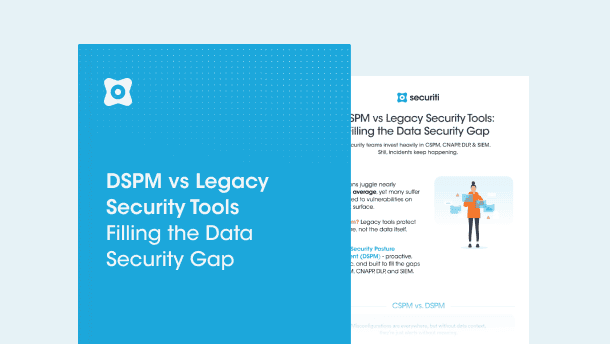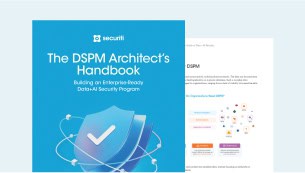To help organizations address these challenges, Gartner introduced Data Security Posture Management (DSPM) as a new category of data security tool in its 2022 Hype Cycle for Data Security Report. Gartner also shared deeper research in the 2023 Innovation Insight for DSPM report to shed further light on this emerging technology. This article delves into the top takeaways from this report to help organizations transform how they protect their most critical asset – data.
Top 3 Takeaways on DSPM from Gartner’s Report
Data Security Posture Management (DSPM) solutions should answer some of the most critical data questions for organizations:
- Where is our data located?
- What type of data do we have?
- What data is sensitive?
- Who can access sensitive data?
- What data systems are misconfigured?
Organizations can leverage these insights to establish data protection and governance controls as data flows across repositories and geographies. Overall, DSPM provides a unified approach to cloud data security by bringing data visibility, data classification, risk assessment and mitigation, access governance, and misconfiguration remediation in one solution.
Let’s take a closer look at the key takeaways from Gartner’s Innovation Insights report to understand how DSPM promises to transform cloud data security for companies.
DSPM Provides Visibility Into Dark & Sensitive Data
The report highlights that:
“The proliferation of data across cloud service platforms (CSPs) and geographic boundaries is creating a need for technologies to discover and locate unknown or unused data repositories.”
Data that is tagged and classified properly can be extremely valuable to organizations. But most data is dark data. To put things into perspective, 40% to 90% of data in an enterprise is dark data. Dark data refers to data that is collected by an organization but seldom used or analyzed. Lack of oversight, for instance, is one of the common reasons that contribute to dark data. Organizations with poor governance frameworks fail to establish proper data retention, storage, or deletion policies. Different departments and teams collect, store, or back up data independently. All this data accumulates over time, resulting in dark data.
Another common reason behind dark data is shadow data systems. Shadow data systems are those assets that exist in a corporate environment but aren’t known to IT. Examples include customer-managed databases running on compute infrastructure in the cloud. Keeping track of such systems, which may not be easily trackable in a cloud provider’s management console, is important as such systems may also contain sensitive data that could expose organizations to security and compliance risks.
Data Security Posture Management (DSPM) can help an organization get better visibility into dark data. It effectively integrates with public cloud services to comprehensively understand all the cloud native and dark data assets. DSPM automatically detects all the data across structured, semi-structured, and unstructured formats as the data assets are discovered.
DSPM further helps teams with sensitive data classification, which is traditionally a huge challenge for large organizations due to consistency and scalability. DSPM classifies data leveraging advanced AI techniques that use Natural Language Processing (NLP) for accurate classification. A robust DSPM must classify data per the business policy and defined industry practices. It should further go into more granular insights with rich metadata, improving data literacy across the organization.
DSPM Delivers Understanding of the Lifecycle of Data
Gartner’s DSPM Innovation Insights report further underscores that:
“DSPM technologies provide visibility into inconsistent data security posture by analyzing the data map and data flows between repositories and across CSPs.”
Data mapping and lineage are necessary as these processes deliver transparency, insights, and data traceability across the data lifecycle.
It is possible to develop data map flows and lineage diagrams manually. But it comes with its fair share of challenges. For instance, mapping and lineage tracking become overwhelming due to various data sources or a lack of appropriate mapping or lineage tools. Secondly, manual efforts tend to lead to human errors and, thus, inconsistent mapping or lineage flows.
DSPM leverages automation to effectively discover and classify data and build a data map flow. The data map enables organizations to visualize how the data flows within the corporate environment while it moves from one system to another or from one source to another source. It further creates a lineage flow that tracks the data's movement and transformation at different stages. It clarifies how the data originated, who accessed it, where it’s stored, and how it transformed.
DSPM Helps with Risk Assessments Across Data Lifecycle
Assessing risks across the data lifecycle is yet another critical component the report points out:
“You need to be able to identify, discover, and track data throughout its life cycle as it is created, stored and analyzed, so that the data security posture for each data platform can be assessed to validate appropriate business purposes.”
When organizations don’t have complete visibility across their data lifecycle, they can’t really assess if the data is appropriately protected. This puts the data at serious risk, such as access governance and misconfiguration risks. For instance, if organizations can’t track data movement, it may become challenging to monitor data access activities. Unauthorized access to sensitive data can go unnoticed and may put the data at risk of unauthorized access or data breach. Similarly, misconfiguration risks could expose data to public destinations or even to third parties. Such misconfiguration risks could lead to data security or privacy incidents.
Similarly, using cloud service providers means that the data can be automatically replicated, backed up, and even processed in data centers specific to those CSPs. This could create data residency and retention risks as these data centers are in distinct geographies and different environments, with every environment having its own retention settings.
DSPM tools have the ability to effectively discover and classify data across structured and unstructured formats through effective data mapping and lineage tracking. A robust DSPM must deliver an efficient metadata management capability. This capability delivers organizations a comprehensive understanding of data regarding quality, availability, accessibility, and confidentiality. These insights can help organizations identify risks associated with sensitive data access, data residency, cross-border transfers, etc.













































